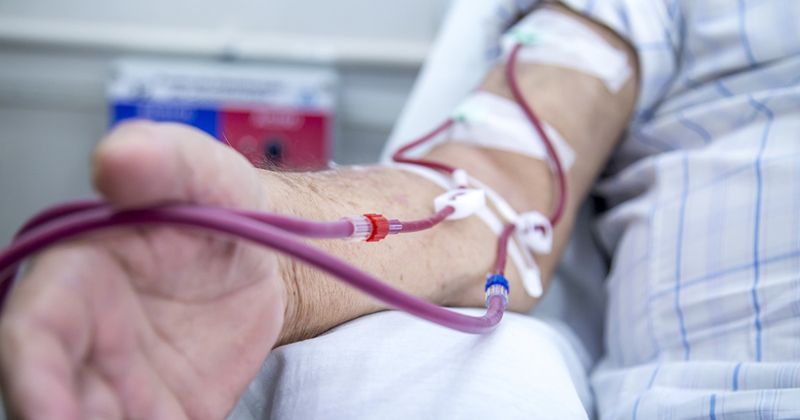Patients report less pain during cannulation when listening to music
Patients using hemodialysis reported less pain when listening to music during the cannulation procedure, according to data published in the Clinical Journal of the American Society of Nephrology.
However, there was no substantial evidence that music impacted anxiety, blood pressure or stress.

“Numerous studies have shown that listening to music reduces a variety of pain, such as pain associated with cancer, surgical treatment, lumbar puncture in children, and prostate biopsy,” Emi Inayama, MD, from the Mihama Narita Clinic in Japan, and colleagues wrote. They added, “Therefore, music may be a useful analgesic for patients on hemodialysis experiencing frequent cannulation pain. However, studies investigating the effects of music on patients on hemodialysis are limited, and it remains unclear whether music reduces vascular access cannulation pain.”
In a multicenter, single-blind, crossover, randomized trial, researchers examined 121 patients who had undergone hemodialysis for at least 6 months and reported pain during cannulation.
Researchers randomly assigned patients 1:1 to the early sequence group (early group) or the later-sequence group (later group). Of the 4-week study, weeks 1 and 3 were considered “no sound” periods during which patients wore headphones with no sound. On week 1, the early group listened to “Sonata for Two Pianos in D Major, K.448” during cannulation, while the later group listened to white noise. This was flipped for week 4. Patients put headphones on 8 minutes before the start of the cannulation procedure and kept the headphones on through the puncture.
In attempt to conceal the hypothesis of the study from the patients, researchers told them that “both music and white noise may effectively alleviate cannulation pain, and we would like to verify which is superior.”
Researchers considered the VAS score for cannulation pain independently evaluated by patients as the primary outcome.
Analyses revealed the median baseline VAS pain score was 24.7 mm. Researchers observed the median change from “no sound” to the music period was –2.7 mm, and the change from “no sound” to the white noise period was –0.03 mm. Therefore, patients reported less pain when listening to music compared with white noise.
However, patients did not report significant differences in anxiety, blood pressure or stress.
“In conclusion, listening to music alleviated pain associated with cannulation among patients undergoing hemodialysis in this well-designed randomized controlled trial, whereas secondary outcomes evaluating anxiety, vital signs, and stress markers showed no improvement,” Inayama and colleagues wrote. “Although the effect size of music alone might not be clinically sufficient to control pain, music may be useful as a safe and inexpensive adjunct pain relief method for patients who do not experience a sufficient analgesic effect from other treatments.”
